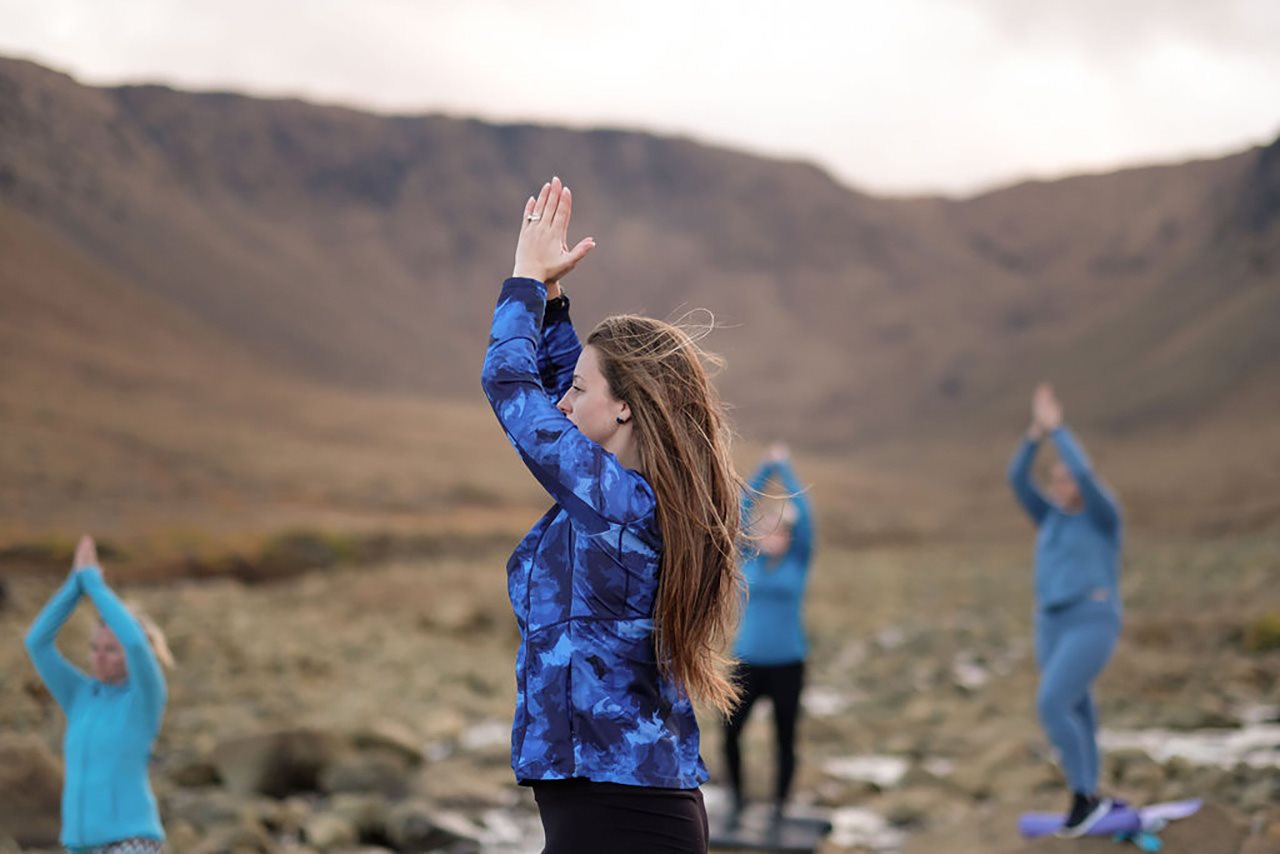2024-07-08T07:01:00
(BPT) – If your image of the perfect vacation involves slowing down and appreciating the moment, Atlantic Canada is your ideal destination. This latest travel trend — seeking respite from today’s busy lifestyles — expresses a yearning for peace and calm that’s hard to find.
Fortunately, inspiring locales throughout New Brunswick, Newfoundland and Labrador, Nova Scotia and Prince Edward Island provide experiences that are just right for your mindful getaway. Each of these four provinces offers a unique and stunning array of natural landscapes — ranging from rugged coastlines and sandy beaches to lush forests, awe-inspiring fjords, beautiful waterfalls and amazing rock formations. The salty sea air and gorgeous scenery everywhere you look compels you to stop, take a deep breath and truly take in your surroundings.
The rich history of the people and wildlife that have called this region home also reveals an astounding ability to become one with the natural environment. Each province offers opportunities for mindfulness that draw on these unique landscapes and sensory experiences you can’t find anywhere else in the world.
Here are just a handful of the many ways you can learn to slow down and embrace the moment in Atlantic Canada.
1. Have a whale of a time in New Brunswick
Whale watching on the Bay of Fundy is an incredibly memorable, humbling experience that makes your heart speed up and your mind and body slow down — and takes your breath away. Getting up close and personal to these gentle giants puts everything else into perspective.
The bay is home to several species of whales, including the rare North Atlantic Right Whale. Make sure to schedule your trip around whale-watching season, from late May until early October.
2. Feel the gravitational pull of the earth and moon at Hopewell Rocks
Looking for an awe-inspiring experience? The Bay of Fundy has the highest tides in the world and the best place to experience this natural phenomenon is Hopewell Rocks, where the water level can have a differential of 50 feet from low to high tide — equal to a five-story building. The amount of water entering the bay during one tide change is enough to fill the Grand Canyon, twice.
You can walk the ocean floor at low tide and view the famous Flowerpot Rocks, sea cliffs and amazing rock formations. Then venture out for a guided sea kayaking tour at high tide in the same area you walked a few hours earlier. This unique place helps you slow down and appreciate the power and magic of natural forces.
Find these and other amazing adventures at TourismNewBrunswick.ca.
3. Explore ancient wisdom in Newfoundland and Labrador
Imagine gathering around the fire to discover Indigenous Mi’kmaq wisdom like the medicine wheel, an ancient holistic healing practice that can guide you to a better understanding of yourself and the world around you.
Through storytelling, you’ll learn about indigenous experiences and enjoy a tasting of fire-roasted bannock. In this Indigenous Medicine Wheel and Fire Circle Experience, you’ll explore ancient wisdom of the Mi’kmaq culture, learning how these teachings offer a holistic approach to well-being and discovering what life is like for indigenous peoples in Newfoundland and Labrador.
4. Let the power of nature transform you
Seeking a genuinely transformational experience? A seven-day nature retreat through Transform Gros Morne may be perfect for you. Nestled in the heart of Newfoundland, Gros Morne National Park is a magical place unlike any other you have experienced. The geological mountainous wonder of the Tablelands reveals the Earth’s mantle, thrust to the surface through tectonic upheaval. Once you take a deep breath of the pristine salty air and hear the crash of the waves, you’ll begin to feel a sense of peace.
To discover a deeper connection with yourself, nature and others, you’ll immerse yourself in the power of nature to find new ways of seeing the world and yourself, creating powerful, lasting and impactful change in your life. You will see nature as vital to your health and well-being.
Discover many more magical experiences at NewfoundlandLabrador.com.
5. Revive your inner child in Nova Scotia
Yearning for the carefree days of childhood? Experience eco-friendly fun through Tidekite ReWIND Adventures in Nova Scotia, where you can be a free spirit, play, learn and create. Activities include:
- ReWIND Adventures: The only land sailing experience in Canada with Blokarts, where the power of the wind guides you across the beach.
- ZenAct: Experience an act of Zen via sand art, racing against the tide. This great outdoor activity for all ages inspires you to appreciate the moment.
- Tide walk: Stroll along the beautiful coast for a guided walk during low tide to explore and listen to the sounds of nature.
- Kite flying: Learn about kite history and global designs, then fly a kite from the largest collection of kites in Nova Scotia, including 140-foot kites, plus kites with diverse images, shapes and sizes.
6. Dig up some fun
You can dig up your next adventure as you learn about the rich heritage of clam digging in Nova Scotia with a Clam Harbour Clam Digging Adventure. You’ll accompany a fourth-generation professional clam digger to dig your own clams, then return to Memory Lane Heritage Village to cook up a “feed” of clams, along with a tasty traditional lumber camp meal.
Explore all the fun possibilities at NovaScotia.com.
7. Walk your way to mindfulness on Prince Edward Island
Make the most of each present moment on this magical island by hiking or cycling your way around The Island Walk route along the ocean, much of the Confederation Trail, red dirt roads and quiet secondary roads throughout Prince Edward Island. The serene landscape will inspire meditative or invigorating long-distance walking adventures that you can experience at your own pace.
Because The Island Walk is not technically difficult, it offers options for everyone. You can complete the entire route, or tackle it in sections just right for you.
8. Immerse yourself in nature
Need a true change of pace? Experience the ultimate glamping adventure at Nature Space Resort, where luxury meets nature in authentic, cozy Mongolian yurts. Unwind as you enjoy the unique ambiance, plush beds, inviting seating areas and all the essentials for a relaxing stay. Nestled amidst the picturesque coastal landscape of Prince Edward Island’s North Shore, you’ll have a one-of-a-kind experience combining the comfort of modern amenities with the breathtaking beauty of natural surroundings.
You can further immerse yourself in nature through guided kayak tours showcasing the rich ecosystems and breathtaking scenery of the island, as well as hands-on learning experiences and unique culinary delights featuring the island’s fresh seafood.
Find your perfect getaway at TourismPEI.com.
Inspired to enjoy your next trip mindfully? Explore all the possibilities for your Atlantic Canada vacation at VisitAtlanticCanadaNow.com.






























